Tokoldosh junction is an intersection of two main linear urban morphologies: the railway line running through the middle of the city in the East-West direction and cutting it in half and the Alamedin River cutting through urban fabric in the South-North direction. Their Intersection creates a very interesting urban space with a complex topography and very interesting urban forms. On the Southern side of railways, there is the industrial zone with factories, warehouses, shopping centers, and car service stations. The North-Western corner is occupied by garages of residents living in the nearby multi-storey apartments. The North-Eastern corner is a corner of the historic low-rise densely built multi-ethnic neighborhood called Tokoldosh. Railway lines are accompanied by two parallel pieces of urban infrastructure: Lev Tolstoi street and central heating pipelines. Three most interesting elements of this junction are the pipelines themselves, two waterfalls on the river and a dovecote.
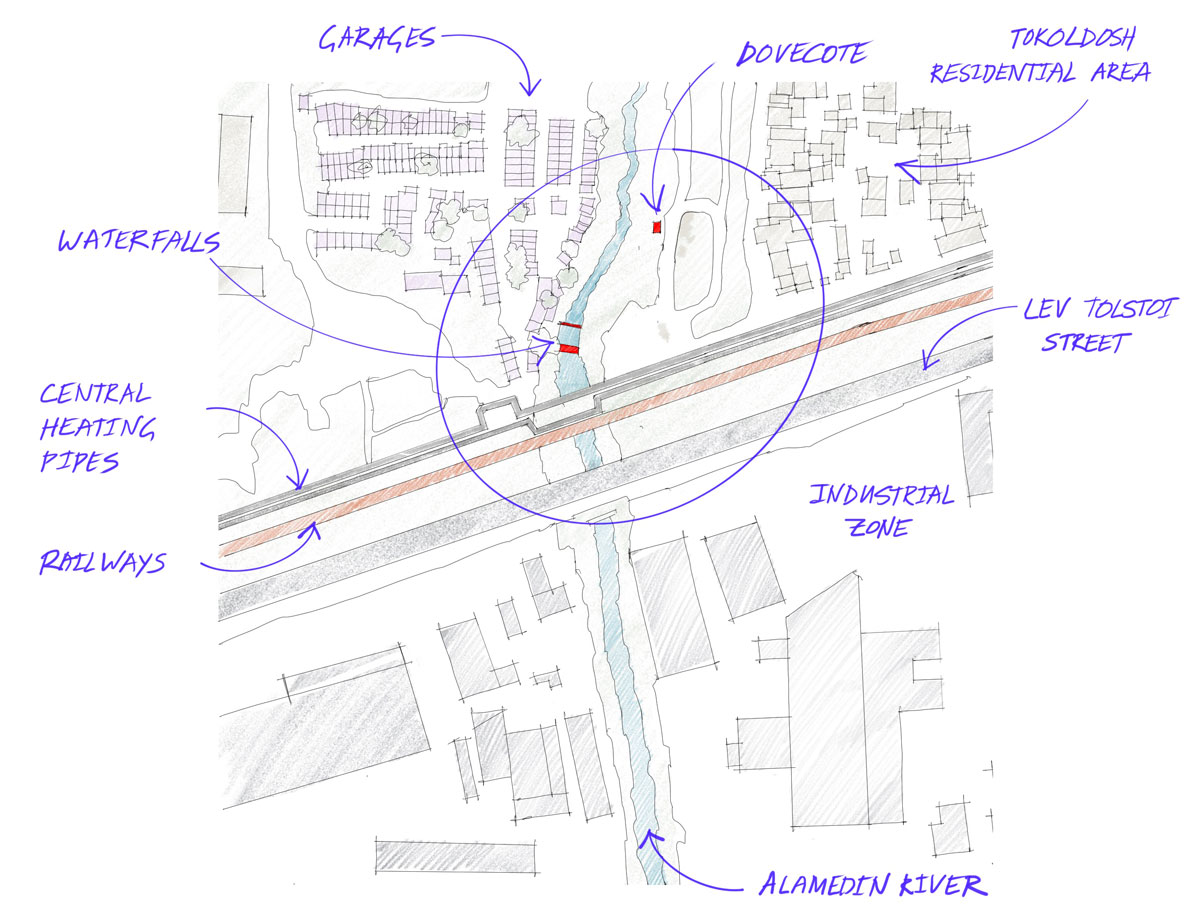
Pipelines bring hot water from the central heating power station to the city. The pipes are more than a meter in diameter. They are covered by a thick layer of isolation to preserve the heat and they have very picturesque structural element, such a pipe valves, iron bridges over them, ladders and platforms, like the ones you see in the image below.
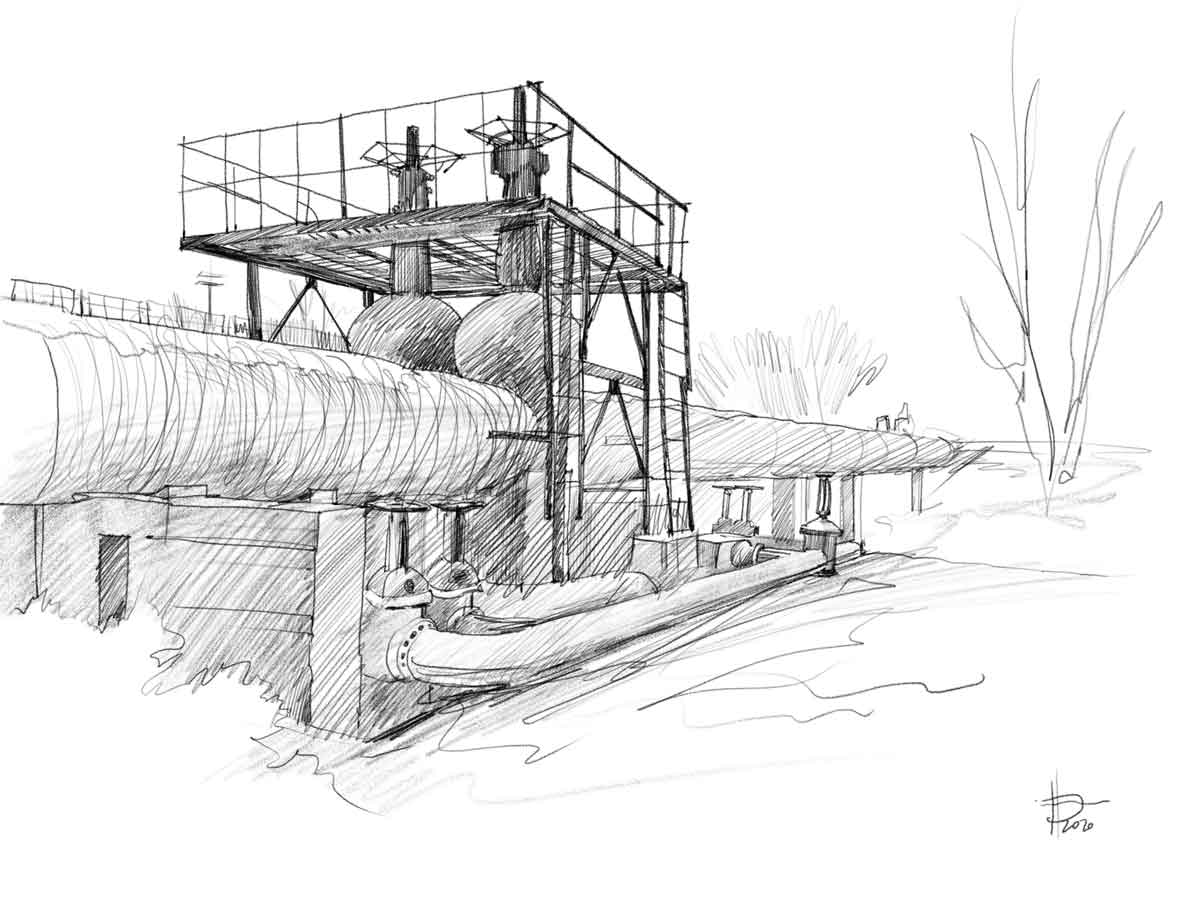
Just below the railways, there is a two-level waterfall. Each level drop is about three meters. The first drop is flat and the wall of water is flat. The second level has seven cubic "teeth" made of concrete with even distances between them to channel the water into six fast and loud streams.
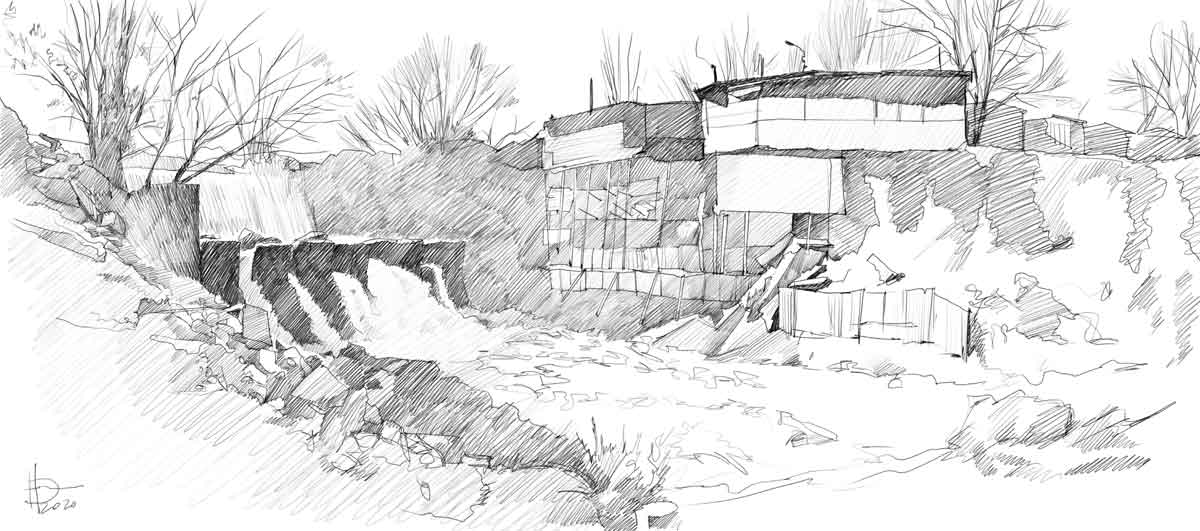
The eastern bank of the river has a 50-60 degree slope and is mostly made of construction debris. The western bank near the waterfall is vertical and it has a very interesting support structure to prevent the building on the bank's edge from falling. The structure is made of iron sheets, wooden planks and iron pipes. The flat surfaces of the supporting wall are slightly angled in relation to each other and produce very dynamic plasticity of shadows. Thin vertical pipes contrast sharply with these flat surfaces, especially when lit by the sun.
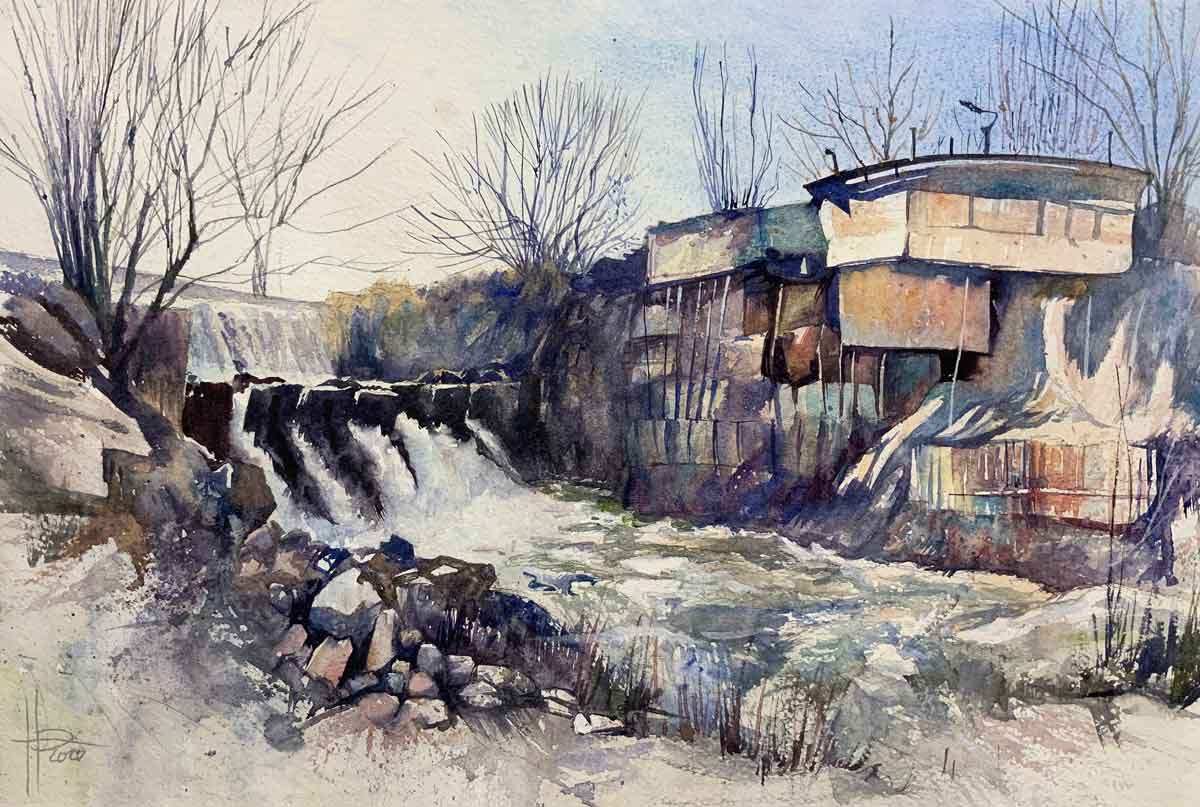
The view into the river captures a fairly deep canyon of the riverbed. The left (western) bank of the river has garages on it. The main attraction on the right (eastern) bank is a beautiful dovecote with an interesting history.
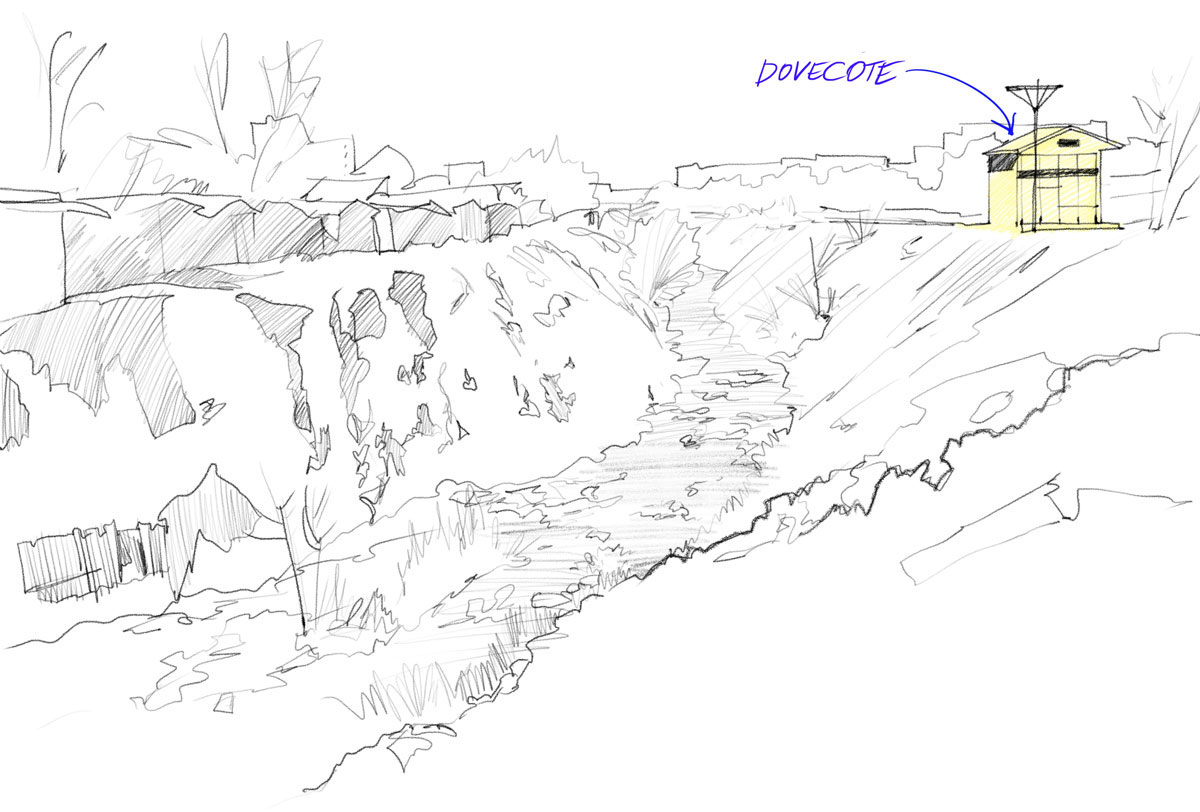
We had an opportunity to talk to the owner of this dovecote. Ruslan grew up in the Tokoldosh neighborhood and from childhood was interested in pigeons. He had a small dovecote on the attic of his parents' house. Breeding pigeons was a quite popular activity among kids in the Soviet times. Ruslan stopped breeding when he grew up, but when he reached 40, he and his friend decided to revive their teenage hobby. So, they bought a place among garages on the river bank and built this quite modern looking dovecote. It has two rooms: one with the nests and one for feeding.
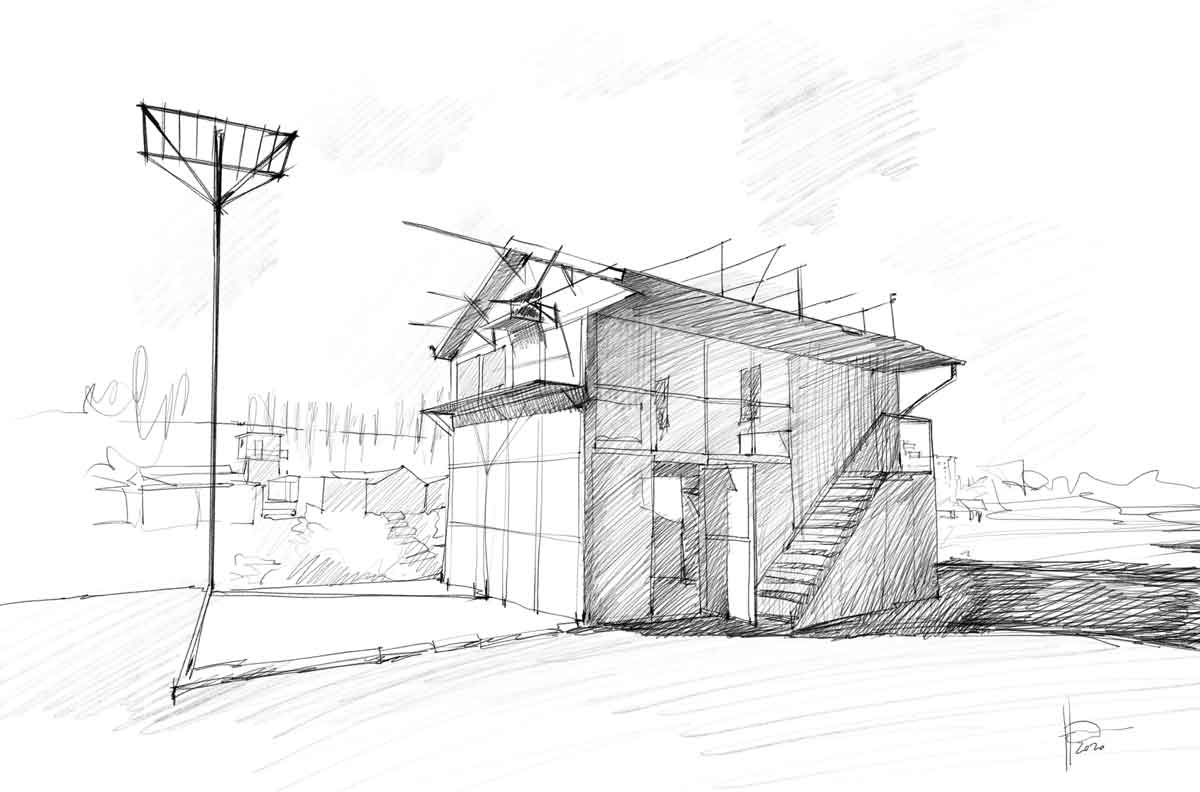
They went to Almaty to buy pigeons and it now has been three years since they started breeding. The dovecote currently has about 30 pigeons, all of which were born this year. "Parents" live separately in a different place. Ruslan, his friend or children come to the dovecote twice a day to feed the birds and to fly them. Ruslan doesn't whistle, instead he uses a very long stick with a piece of fabric attached to it to push the doves into the air and to make them fly. The birds fly in circles in clock-wise direction. Some of them play while in the air: they fly high or they stay in one point in the air.
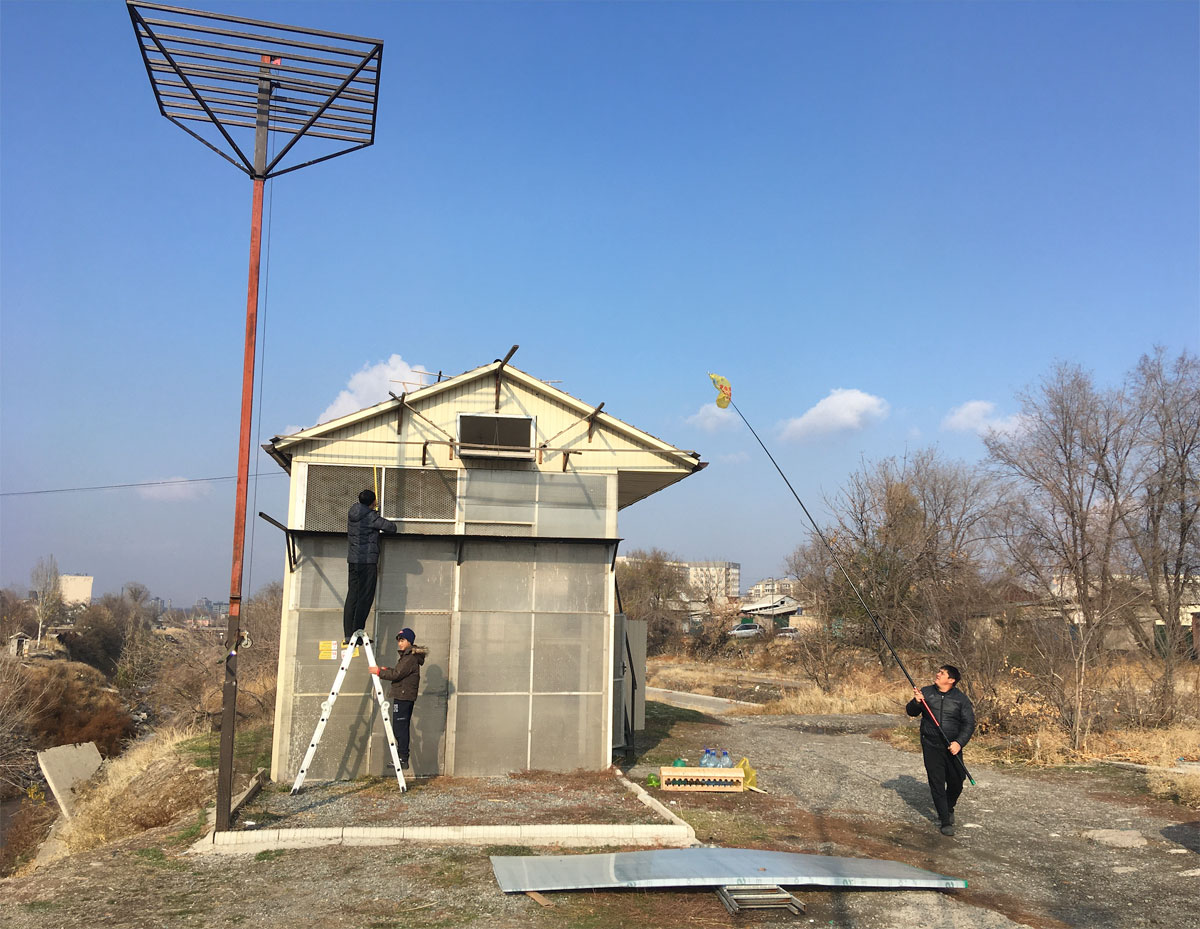
Apparently, breeding doves is becoming popular again in Bishkek. There is a special club and regularly organized pigeon shows. This is a very interesting trend: people are reviving the old Soviet tradition that is associated with all kinds of things, including the romanticism of youth. Looking at the small flock of pigeons making circles in the air we were quite mesmerized by the beauty of their movement. If anything, watching pigeons forces people to look into the sky and at least for a short time it helps them forget the everyday worldly problems on the ground.
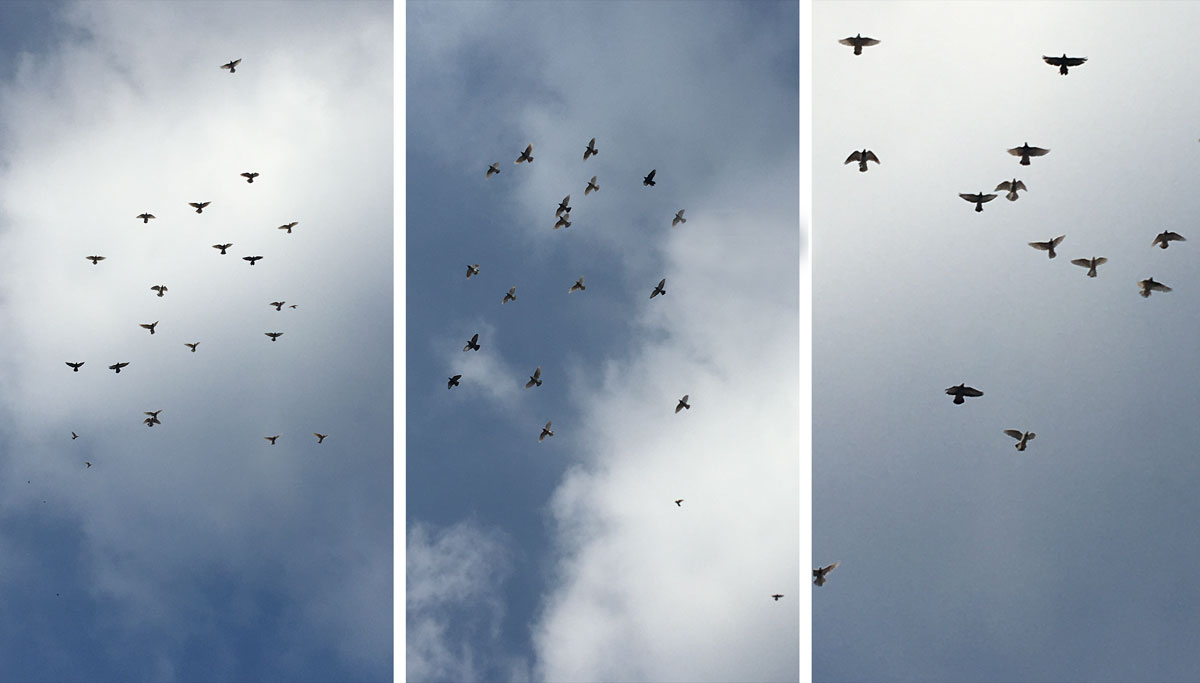
Drawings and watercolor painting by Emil Nasritdinov.